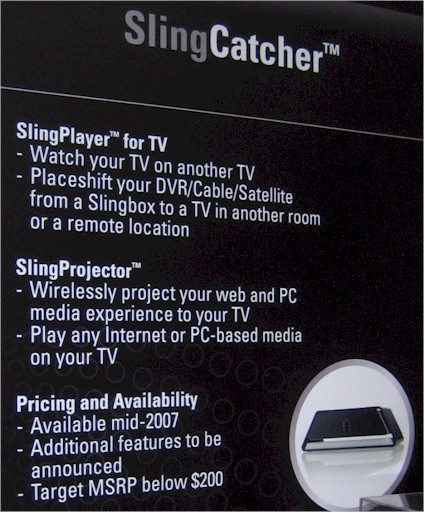Introduction
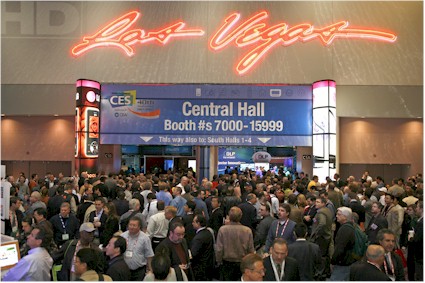
Groggy, tired and sore, I’m finally back home. It’s the "morning after" CES 2007 and I’ve survived being packed into my allotted (and ever-shrinking) space on a germ-laden flying sardine, armrest jousting with my seatmates while praying that the guy in front of me doesn’t put his seat back and that crying babies and fidgety kids are far away.
And I wonder: why did I do it again?
Don’t let anyone tell you otherwise; CES is not fun. The promise that lures us back is the array of shiny new toys to gawk at and fondle. The reality is typically oversold remakes of products we already have with minor tweaks and delivery dates somewhere out in the dim future.
So if you’re looking for a gushy summary touting all the wonders that CES allegedly had to offer, stop reading here. Instead, here’s my wrapup of the state of networking and related technologies at this year’s CES
Dual-band WLAN Redux
There wasn’t much talk of the upcoming 802.11n Draft 2. Instead, WLAN product announcements centered on dual-band draft 11n products. Buffalo introduced its Marvell-based AirStation Wireless – N Nfiniti Dual Band Router & AP (WZR-AG300NH) and D-Link its Atheros-based DIR-855. And both companies also introduced dual-band media players to go along with their shiny, new routers.
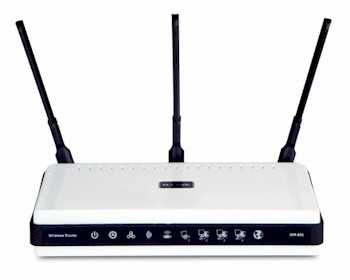
D-Link DIR-855 Dual Band 802.11n Draft N Router
Linksys looked like it was going to announce its WRT600N dual-band draft 11n router, but didn’t. A Linksys spokesperson told me that the product isn’t ready yet and will be introduced only when it meets Linksys’ ready-to-ship standards. And Apple joined the dual-band bandwagon, announcing a new draft 11n Airport Extreme to go along with its AppleTV.
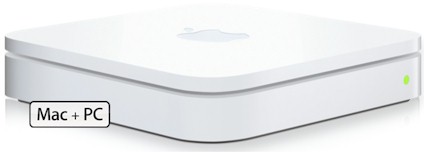
New Apple Airport Extreme
Even though these dual-band routers will be more expensive than single band, I think the trend to dual-band for draft 11n is a good thing. I have more to say in this article if you’d like to hear why.
Wireless USB: Real, Ready and Slow
Since the WiMedia Alliance’s catchphrase for the show was "Real & Ready", I dropped by to see if they could explain why Wireless USB products still aren’t shipping and why reviewers have found that the technology that hypes a "480 Mbps" transfer rate has real throughput of around 8 Mbps.
None of the chip manufacturers in the WiMedia area were going to speak to the first point, but I got both confirmation and explanation of the slow data rate of at least the Belkin Cable-Free USB Hub from the folks at Wisair (which makes the chipset used in the Belkin product).
The main throughput killer for the Belkin product was explained to be the "USB 2.0 host" (Wireless USB module connected via USB 2.0) adapters at both ends of the connection. Even though USB 2.0 has the same 480 Mbps maximum data rate as Wireless USB, the overhead and inefficiencies in the bus-to-bus transfers take their toll. The other throughput-eater was said to just be the fact that the tuning required to maximize performance hasn’t yet been done.
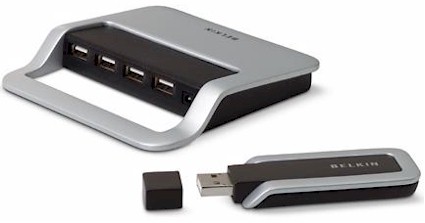
The Elusive Belkin Cable-Free USB Hub
The Wisair rep said that the best case throughput that could be expected with USB host adapters at both ends of the connection is around 50 Mbps (or 6.25 MBytes/sec) If one end is able to be a "native" device, i.e. with the Wireless USB module interfacing with an internal processor bus like PCI, throughput could rise to around 100 Mbps. Best case throughput will be seen with native-to-native device transfers, which are expected to come in around 200 Mbps.
Real world testing done by Craig Ellison for PC Magazine using flash memory cards showed much lower throughput than estimated by Wisair. The summary table below from Craig’s article shows throughput with the Belkin product to be around 8X lower than a wired USB 2.0 connection and 6X lower than the numbers offered by Wisair. At any rate, paying almost $200 for what amounts to a wireless USB extender that is significantly slower than a wired connection doesn’t seem like a very good deal to me.

USB 2.0 vs. Wireless USB transfer speed
(courtesy of PC Magazine)
This "year of Wireless USB" will see primarily hub-and-dongle products like the Belkin (assuming it starts shipping at some point). The latter half of the year might start to see some "native" Wireless USB solutions integrated into PCs, but I wouldn’t hold my breath. And when might we see devices like cameras, cell phones and media players with native Wireless USB? Try next year… if PC manfs hold up their end of the deal with integrated native Wireless USB.
Alternative Networking: Slowly inching forward
The headline about says it all for the state of powerline and TV coax-based networking this year. On the powerline front, the DS2 / UPA vs. Intellon / HomePlug battle continues, with DS2 in the lead for 200 Mbps-or-so (or "HD") powerline networking products shipped, mostly into IPTV applications outside the U.S., but also widely available through online and neighborhood retailers. HomePlug AV products have been announced by Zyxel and Linksys, but haven’t hit retail yet (I’ve been waiting since late November for my promised test samples from Zyxel).
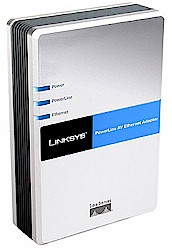
Linksys PLE200 PowerLine AV Ethernet Adapter
The HomePlug forces say they have signed on Actiontec, Asoka USA, Aztech, devolo AG, D-Link, Gigafast, Linksys, NETGEAR, Sercomm, Siemens Home and Office Communication Devices, Solwise and ZyXEL for fielding HomePlug AV products although currently-shipping "HD" powerline products from D-Link (DHP-301) and Netgear (HDX101) use DS2 chipsets.
I asked DS2, Intellon and HomePlug booth reps whether any progress had been made on at least allowing DS2 and HomePlug products to be plugged into the same home’s wiring without them rendering each other inoperable. Sadly, the answer is no. So you better pay attention to what you’re buying if you go shopping for powerline networking products and get either all DS2 or all Intellon based gear. DS2 products should be identifiable by a UPA (Universal Powerline Association) logo somewhere on the box, while Intellon products should have a HomePlug logo.
It’s too bad that the two camps have chosen a path that is sure to give consumers some unhappy experiences with powerline technology, because I think that the 200+ Mbps technology might be a contender for streaming HD content on a home network. But the stakes are big and so are the corporate egos, so once again, the consumer takes the risk when trying to figure out what to buy.
Extending your network onto your home’s TV coax cabling is also getting more real. But once again, there are competing technologies. The key player in this area is Entropic whose technology forms the basis of the Multimedia over Coax Alliance‘s (MoCA) spec. However, Entropic is being challenged by both DS2 and Intellon, who have repurposed their powerline technology to also work over coax.
The consumer is at less risk here for purchasing incompatible products, since coax-based networking seems to be limited to deployment by service providers. No Ethernet-to-coax networking adapters are currently available in retail, nor do any seem planned for the near future (although I did see a Linksys blue box Ethernet / coax bridge in Entropic’s booth and was told that Actiontec might be considering a retail product).
Given the superior electrical environment, a coax-based networking solution would be the next best thing to Ethernet for HD streaming. But since coax isn’t guaranteed to be found in every room and power outlets are, coax networking covers a smaller percentage of possible households.
A few other encouraging developments
Despite being the grumpy old bastard that I sometimes am, there were a few things I found that put a smile on my face. The first was the emergence of DECT 6.0 cordless phones. Cordless phones are one of the biggest killers of 802.11b/g networks and many 5.8 GHz models aren’t much better since they use both 2.4 and 5 GHz bands.
DECT 6.0 phones, however, use frequencies around 1.9 GHz, which won’t interfere with 11b/g networks. GE (yes, that GE) actually had some nice looking products that felt more comfortable to hold and use than many of the phones I’ve been trying lately. GE’s new line includes PSTN models as well as standalone Skype / PSTN, "InfoLink" (which can pull content like headlines and weather from the Internet), and "Cell Fusion" (which can send and receive calls from Bluetooth-enabled cellular phone) models. Most will be available toward the end of Q2.
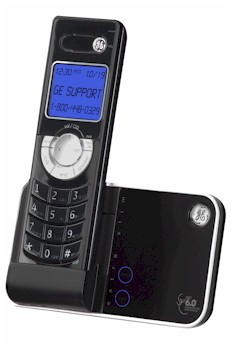
GE ‘Ultra Slim’ DECT 6.0 phone
The other thing that put a spring in my step was Sling Media’s SlingCatcher, which lets you take content "slung" from your SlingBox and display it on a TV without any computer involved.
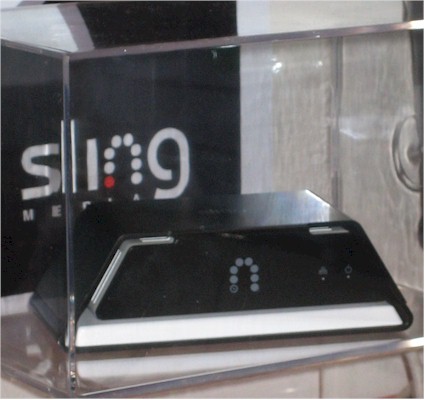
Sling Media Sling Catcher
The poster below shows that the Catcher will also have a "Projector" feature that will also put any Internet or PC-sourced content on your TV. Maybe I’m missing something, but Sling Media may be the first company to actually let me enjoy any video content that I can get my hands on over a networked connection to my main video viewing device: my TV. And do it all over an encrypted connection that should keep content providers’ lawyers out of its hair. Granted, this won’t be a HD picture, but it sounds like a solution light years in capability and convenience beyond anything else I’ve seen. For me, this is one product I can’t wait to see.
